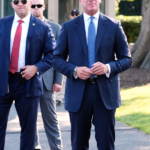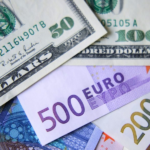OPEC+ agreed to surge output again in June, as the group’s leaders continue an accelerated revival of supply aimed at punishing over-producing members that has sent crude prices plunging.
While the statement cited “current healthy market fundamentals,” OPEC+ delegates have attributed the strategy shift to Saudi frustration with overproduction by members like Kazakhstan and Iraq, and have chosen to discipline them through the financial “sweating” of a price slump.
“OPEC+ has just thrown a bombshell to the oil market,” said Jorge Leon, an analyst at Rystad Energy A/S, who previously worked at the OPEC secretariat. “With this move Saudi Arabia is seeking to punish lack of compliance particularly from Kazakhstan but also ingratiate with President Trump’s push for lower oil prices.”
The plunge in prices threatens oil firms including US shale producers, who have warned they’ll be unable to obey Trump’s call to “drill, baby, drill” toward a new era of American energy dominance. It also spells pain for members of OPEC+ including the Saudis themselves.
The kingdom has been already been forced to cut investment in projects at the heart of Crown Prince Mohammed bin Salman’s plans for economic transformation, such as the futuristic city, Neom. The outlook for Mideast nations was downgraded last week by the International Monetary Fund, which estimates that Riyadh needs oil prices above $90 to cover government spending.
So far, the “sweating” appears to have had little success in reforming the alliance’s rogue producers.
While Iraq is making some effort to respect its targets, the same can’t be said for Kazakhstan, the group’s most flagrant quota-cheat and the main focus of Riyadh’s ire.
Chevron Chief Executive Officer Mike Wirth said on a conference call on Friday that he didn’t discuss potential curtailments at the company’s Tengiz development in Kazakhstan when he met with the country’s leaders recently.
The shift by OPEC+ toward opening the taps marks a sharp departure for Saudi Energy Minister Prince Abdulaziz bin Salman, who has mostly urged the group to exercise caution through his five-year tenure. It’s a strategy that more closely resembles the brief war he waged against OPEC+ co-leader Russia in 2020.
Moscow’s attitude to the Saudi pivot remains unclear. President Vladimir Putin still needs oil revenues to fund his brutal three-year war against neighboring Ukraine, but his warmer relations with Trump may offer the prospect of relief from sanctions that have stymied the Russian oil trade.
The eight OPEC+ members involved in the curbs are in the process of restoring production halted since 2022. They will meet on June 1 to decide production levels for July, according to the statement.









